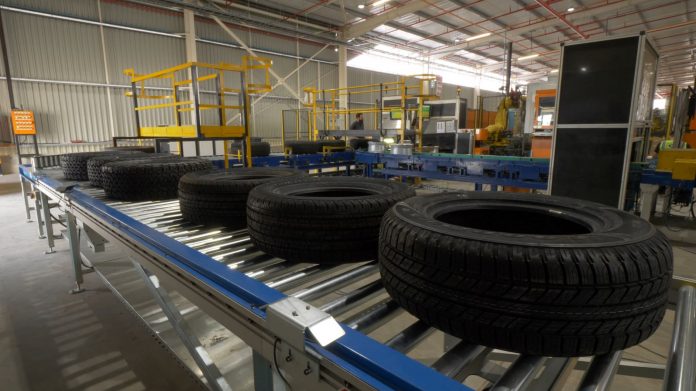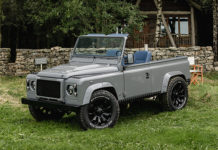In its ongoing drive to improve production efficiencies and capacity, Ford Motor Company of Southern Africa (FMCSA) has launched a new Wheel and Tyre Facility at its Silverton Assembly Plant in Pretoria, which produces the Ranger pickup and Everest sport utility vehicle (SUV) for domestic sales and over 100 export markets around the world.
Construction of the new, larger Wheel and Tyre Facility – which spans almost 5 000m2 – commenced in September 2019 to replace the existing 2 993m2 facility. It was completed within just over three months and began operations in January 2020 before South Africa went into COVID-19 lockdown in March this year. Nevertheless, with the Silverton plant back up and running since the beginning of June – with one new vehicle once again coming off the line every two minutes – the benefits of the new facility are already evident.
“We are always working on ways to enhance our production processes to make the plant more efficient, reduce our cycle times, improve capacity, and offer the best working conditions for our employees,” says Ockert Berry, VP Operations, FMCSA. “The decision to build a new Wheel and Tyre Facility was based on all of these objectives, with the clean-sheet design allowing us to incorporate the latest technologies and equipment to optimise our current operations, and easily introduce future upgrades and expansion when required.”
A new location was selected for this facility closer to the vast Silverton plant’s Trim, Chassis and Final (TCF) line where the vehicles are assembled. This helped shorten the route and time required to deliver the fitted wheels and tyres to assembly line. It also incorporates an adjacent storage area for the large number of tyres and rims that are fed onto a conveyor in the main building for fitment, thereby improving the flow of raw materials.
“The new Wheel and Tyre Facility has allowed us to increase production efficiency and handle greater complexity for the wide range of rims and tyres fitted to the Ranger and Everest models,” explains Yuliia Varchuk, Ford’s TCF Vehicle Operations Manufacturing Engineering manager.
The Silverton plant currently assembles approximately 480 vehicles per day based on two eight-hour shifts, which translates to around 2 400 tyres fitted on rims and supplied to the TCF line daily.
“With a fitted wheel and tyre coming out of this facility approximately every 15 seconds, the fitment and balancing needs to be seamlessly integrated into our overall workflow, and the new facility has significantly improved our productivity in this area,” Varchuk adds. “This will be further enhanced when an overhead wheel and tyre delivery conveyor installation is completed by September next year. This conveyor will feed assembled wheels and tyres from the new facility directly to the vehicle assembly point of fit in sequence, replacing current manual delivery process, which will help reduce traffic in the plant.”
The new Wheel and Tyre Facility is able to fit a wide range of sizes, currently handling nine rim variants, comprising steel or alloy, and a total of 20 tyre options ranging from 15 to 20-inch diameters. The specialised rims and reinforced, high-performance off-road tyres used on the Ranger Raptor pose an additional challenge – as they weigh a hefty 40kg for each fitted unit – but the facility is geared to easily handle this.
“From the outset, we designed the new facility to make it relatively easy and cost-effective to further increase capacity based on future expansion possibilities, and to handle an even wider range of wheel sizes,” she says.
In keeping with the Silverton Assembly Plant’s advanced technologies, the Wheel and Tyre Facility is almost entirely automated, with the supply of the appropriate rims and tyres electronically synchronised according to the plant’s daily build schedule – taking into account the final destination market and each vehicle’s unique specification. The tyres are fitted to the corresponding rims by four robotic fitment stations, with newly installed automated rim and tyre handling aids improving the ergonomics of the line.
The balancing is also fully automated using CIMAT balancers with turnover stations and audit balancers, with either one-piece knock-on or adhesive stick-on weights used in increments of 5 grams to achieve the perfect ride quality – an important factor in achieving overall customer satisfaction.
Provided by Ford South Africa


























